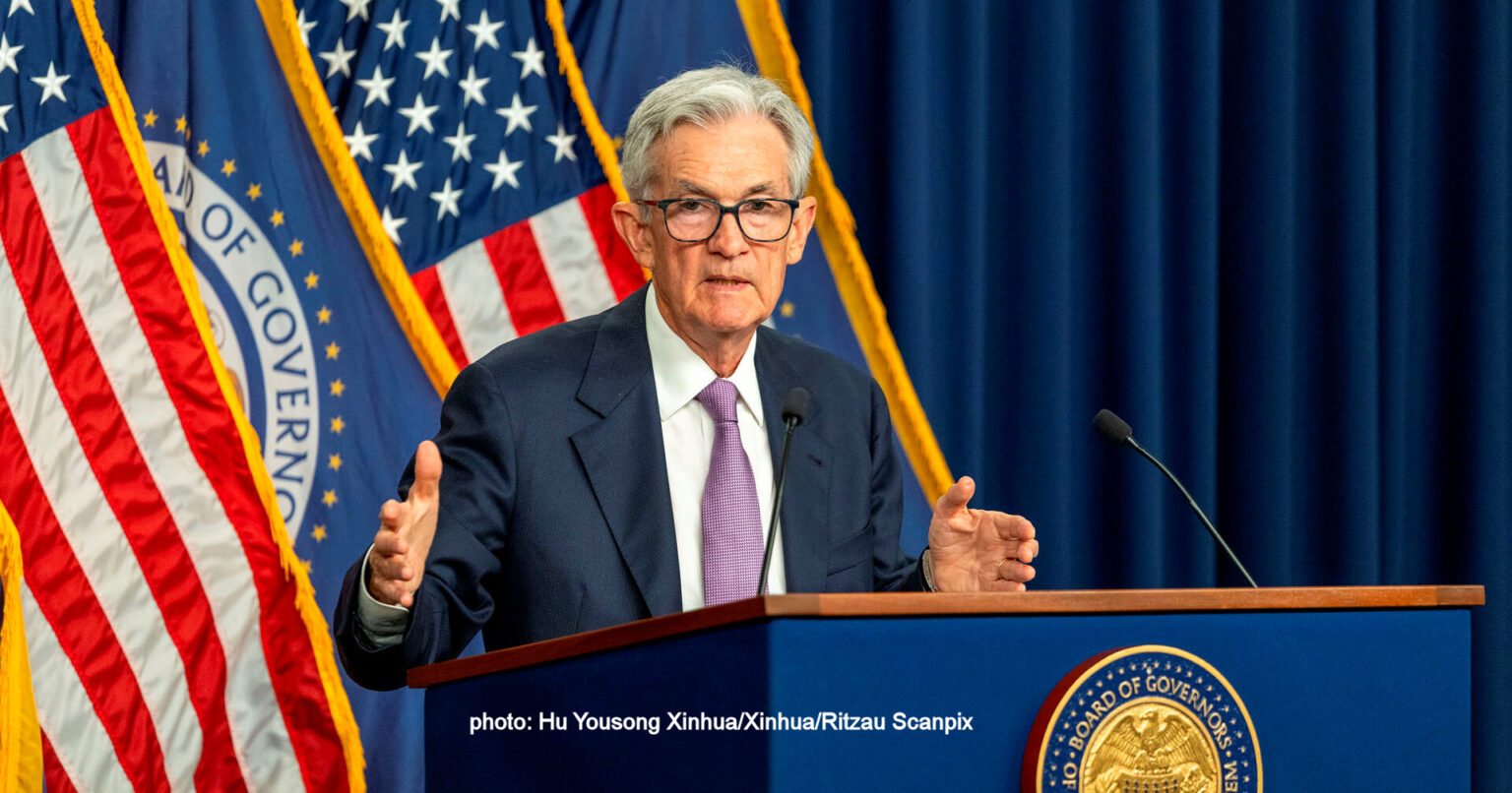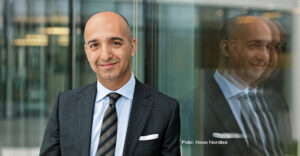Få fri adgang til alle lukkede artikler på ugebrev.dk hele sommerferien:
Tilmeld dig tre udgaver gratis af aktieanalysepublikationen ØU Formue, der udkommer igen til august
David Mericle, Goldman US economist:
“Think this is acknowledging there is some softness in the economy that incrementally adds the case for a cut but in reality this is pretty close to expectations. Waller and Bowman dissented as expected. First paragraph shows “growth moderate in the first half of the year.” So the Fed is trying to smooth through distortions by average first half. Took out comment around uncertainty of economy has “diminished” and kept “elevated”
Will Marshall, Goldman Rates Strategy:
“As expected, if not entirely right down the middle outcome with an adjustment to the growth characterization alongside the twin dissents from Bowman and Waller. Both things that if absent maybe lend a slight hawkish flavor, but not a whole lot of news at this point. Keys in the presser will be how Powell responds to any questions about the 2-cut median dot for 2025 and any more insight into the relative weighting of tariff driven inflation upside against softer realized growth and a policy rate that sits on the restrictive side of neutral estimates.”
Mike Cahill, Goldman FX Strategy:
“In Fed parlance the 1st paragraph is purely backwards looking, and the part they changed in the 2nd is also the descriptive portion. So none of the risk assessment has been changed. On the margin, they’ve acknowledged that activity has softened, net exports still are distorting the data (expect to see him highlight items like domestic final sales), and that uncertainty is not falling anymore. But all of those are factual statements. Then, the news is on the dissents, which are notable but not unexpected. Lack of changes elsewhere likely signal that the Committee did not see a need to send a more explicit signal one way or the other — repeat of the “in a good place” coming — but also suggests that beyond the factual backwards-looking portions, they do not feel strongly about the appropriate timing of next steps.”
Simon Penn, UBS Sales and Trading:
“The Fed statement and voting were in-line and now Powell should reflect that in the press conference. The Fed has an easing bias (the dot plot is clear on that). The statement underlines that and is factual in nature. Waller and Bowman voted as anticipated. Thus far there is nothing new – it’s a question of timing on the cuts. Given Powell doesn’t have nonfarm payrolls to hand and the swing in wording in ADP from last month to this renders it next to useless as an indicator, he should offer little more than comments along the lines of “the median member expects cuts”. Ahead of the Fed, President Trump said he “hears” that the Fed will cut rates in September.”
Florian Ielpo, Lombard Odier:
“From a market perspective, this statement and decision represent non-events. For now, the primary impact is signaling certain members’ willingness to be appointed by D. Trump as the next Fed chair, but beyond this, the remainder is essentially inconsequential. The market’s lack of reaction aligns with this assessment. We now find ourselves with approximately one and a half rate cuts priced in for December this year — an indecisive situation when markets and US finances require clarity.”
David Russell, Market Strategy at TradeStation:
“The Fed is playing for time and still waiting to see how tariffs filter through into prices. The two dissenting governors may be isolated wanting rate cuts because the rest of the committee seems more data dependent. September is up in the air, likely dependent on the inflation readings for July and August. The dust hasn’t settled yet.”
Kathy Bostjancic, Nationside:
“We found it surprising that in the policy statement Fed officials removed language that previously indicated uncertainty about the economic outlook has diminished, instead they asserted that uncertainty remains elevated. From our lens, while uncertainty remains elevated, it has diminished greatly considering increased clarity on the trade and tariffs front.”
Stephen Brown, Capital Economics:
“A skeptic might suggest that those dissents are self-motivated decisions by the two Trump appointees, with Waller in particular on the offensive in the race for the Fed Chair position. Even if we give them the benefit of the doubt, however, we would not take the two dissents as a meaningful sign that the FOMC is getting much closer to voting for a September cut.”
Ashish Shah, CIO public investing Goldman Sachs Asset Management:
“As expected Governors Bowman and Waller were dovish outliers, with the majority of the FOMC instead preferring to wait to learn more about the inflation process over the summer. The next two months’ data will be pivotal and we see a path to a resumption of the Fed’s easing cycle in the autumn should tariff inflation prove more modest than expected or the labor market show signs of weakness.”
Anna Wong, Bloomberg Economics
“The rate hold was expected, but divisions on the committee — with two Fed governors dissenting for the first time since 1993 — was quite notable. Perhaps as a compromise, the policy statement was more dovish than we expected, flagging that growth moderated in the first half of the year. We see that as potentially laying the ground to cut rates soon. However, June core PCE inflation data due out tomorrow — which we expect to come in hot – and July’s nonfarm payrolls, due Friday and also likely strong — may divide the committee even further. Bloomberg Economics thinks most FOMC members won’t feel confident enough that inflation is moving in the right direction until late in the year — cutting only at the December meeting — though the dovish statement flags rising odds of a cut in September.”
Intro-pris i 3 måneder
Få unik indsigt i de vigtigste erhvervsbegivenheder og dybdegående analyser, så du som investor, rådgiver og topleder kan handle proaktivt og kapitalisere på ændringer.
- Fuld adgang til ugebrev.dk
- Nyhedsmails med daglige opdateringer
- Ingen binding
199 kr./måned
Normalpris 349 kr./måned
199 kr./md. de første tre måneder,
herefter 349 kr./md.
Allerede abonnent? Log ind her




